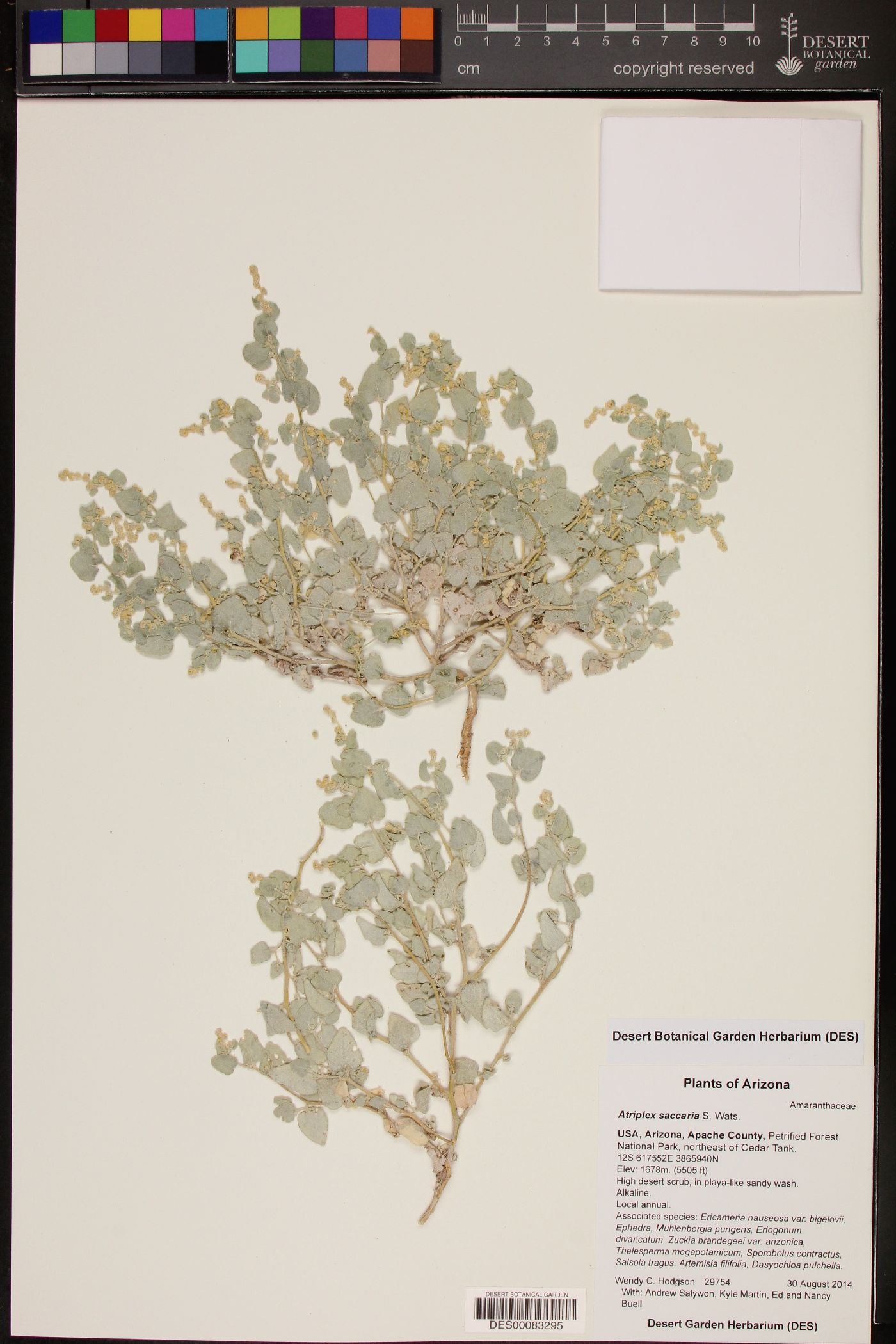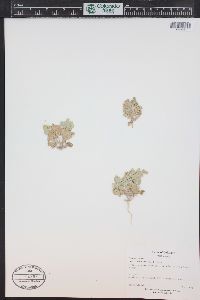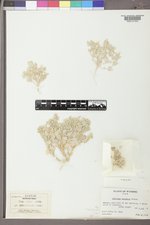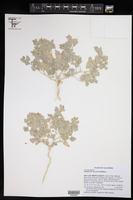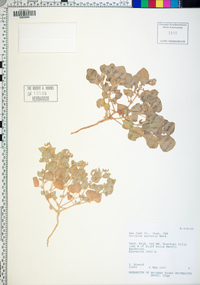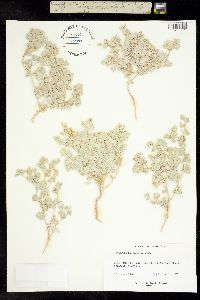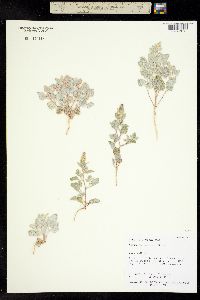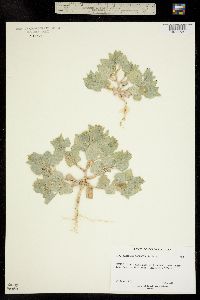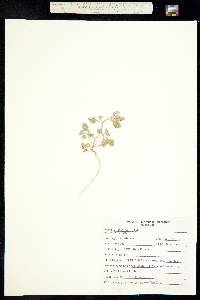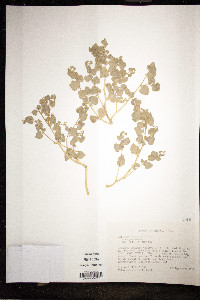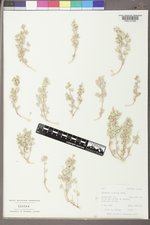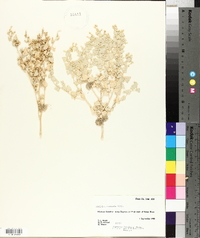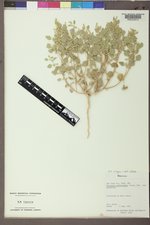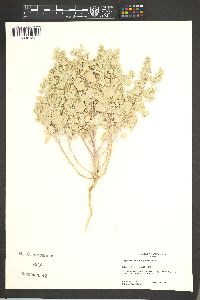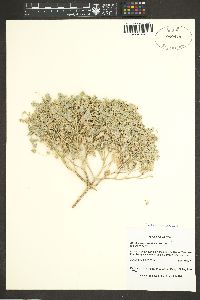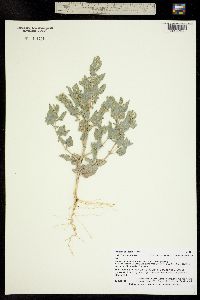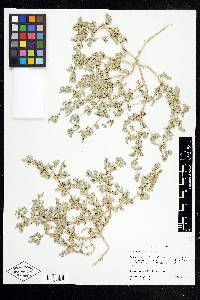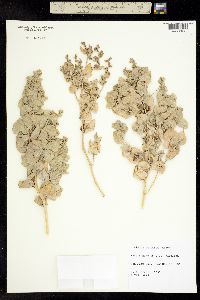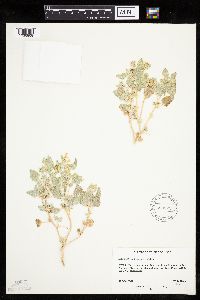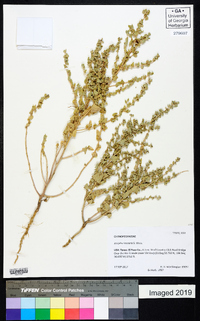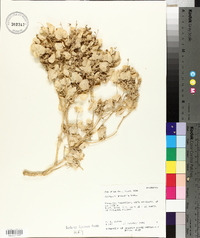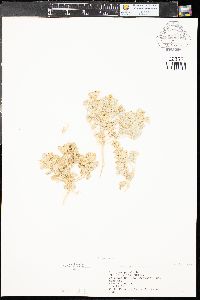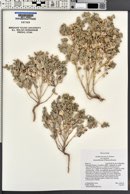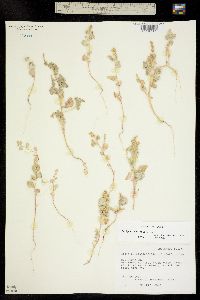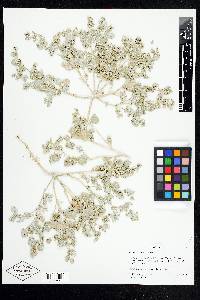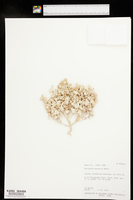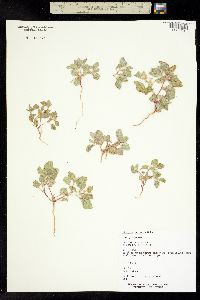
|
|
|
|
Family: Amaranthaceae
sack saltbush, more...Stalked Orache, sack saltweed
|
Herbs, erect, forming rounded clumps. Stems mainly 0.5-4(-5) dm; stems usually branched from base, terete, stout, angled; herbage scurfy. Leaves alternate or proximalmost subopposite, short petiolate or distal ones sessile; petiole 2-5 mm; blade cordate-ovate or subreniform to ovate to deltoid-ovate or oval, mainly 6-40 × 4-30 mm, base truncate to subcordate or broadly cuneate, margin entire or in some subhastately lobed or sometimes undulate-dentate, apex acute to rounded. Staminate glomerules in distal axils or in short, naked, terminal (early deciduous) panicles; flowers with 5-parted calyx. Pistillate flowers usually in fascicles of 1-3 in proximal axils. Fruiting bracteoles monomorphic or dimorphic, larger ones on stipes (2-)4-8(-15) mm, others sessile, united at base, round-triangular or suborbicular, 4-6 mm, irregularly and coarsely dentate and with ± densely beset with flat, cristate, or hornlike appendages, smaller bracteoles (lacking or rare in var. asterocarpa) in same axils, oblong to cuneate, 3-4 mm, apex truncate, dentate only at summit, faces smooth. Seeds brownish to whitish, 1.5-2.3 mm. 2n = 18. FNA 2004, Heil et al 2013, Allred and Ivey 2012 Duration: Annual Nativity: Native Lifeform: Forb/Herb General: Low annual herbs, 5-50 cm tall, forming rounded clumps; stems erect, branching from the base, terete, stout, angled, often suffused with red-purple when young; herbage scurfy. Leaves: Alternate along the stems, the lower leaves sometimes subopposite; lower leaves short-petiolate and upper leaves sessile; blades cordate-ovate to oval, to 4 cm long by 3 cm wide; base truncate to subcordate or broadly cuneate, margin entire or subhastately lobed, apex acute to rounded. Flowers: Small, inconspicuous, and unisexual, with male and female flowers on the same plant; staminate flowers with 5-parted calyx, forming glomerules in axils on the upper stems or terminal panicles which are short, naked, and early-deciduous; pistillate flowers lacking a perianth, usually in fascicles of 1-3 in axils on the lower stems. Fruits: Fruiting bracteoles monomorphic or dimorphic, stipitate or sessile, united at base; larger bracteoles round-triangular or suborbicular, 4-6 mm, irregularly and coarsely dentate and densely beset with flat, crest-like or hornlike appendages; smaller bracte Ecology: Desertscrub and pinyon-juniper communities, on fine-textured saline substrates (often semibarren) of badland-forming geologic formations, and on fine-textured alluvium, from 3,500-7,500 ft (1067-2286 m); flowers April-September. Distribution: Endemic to the Colorado Plateau, from n AZ, nw NM, UT, w CO, sw WY Notes: A small mound-shaped annual Atriplex, associated with saline, badland-type geology such as the Chinle and Mancos formations. It has thick, moist leaves when fresh and thin, brittle leaves when dried. Distinguish from A. argentea by the fruiting bracteoles, which are on 2-8 mm stalks, and have horn-like appendages (A. argentea has mostly sessile fruiting bracteoles that lack horn-like appendages.) Traditionally placed in the goosefoot family (Chenopodiaceae), that entire family was recently lumped into Amaranthaceae. Ethnobotany: The Hopi cooked and ate the leaves as greens. Etymology: Atriplex is the ancient Latin name for this plant, derived from the plant's Greek name atraphaxes; saccaria means bag-shaped or pouched, referring to the bracteoles. Synonyms: Atriplex saccaria var. cornuta Editor: AHazelton 2015, AHazelton 2017 |
This project was made possible in part by the Institute of Museum and Library Services [MG-70-19-0057-19].
Powered by Symbiota

